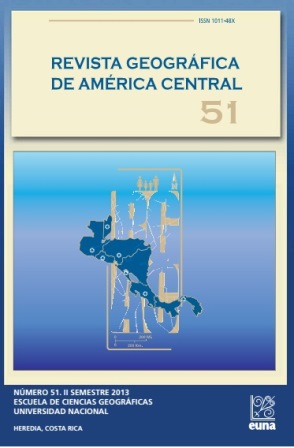GENTRIFICATION OF THE CONDESA, MEXICO CITY. CONTRIBUTION FOR A DISCUSSION FROM LATIN AMERICA
Keywords:
Land use, gentrification, urban transformation, La Condesa, Mexico City, MexicoAbstract
Tçhe La Condesa neighborhood of downtown Mexico City has undergone numerous changes in land use from residential to commercial and office, as well as demographic shifts, resulting in a noticeable transformation of the neighborhood’s landscape. All these features can be defined under the concept known as gentrification. This case study provides elements to discuss the characteristics of the process of gentrification from a Latin American perspective.
References
Authier J. (2007). Relaciones con los comercios y modos de habitar. Los barrios centrales gentrificados en Francia, Alteridades, 17, (33),
pp.9-20. Universidad Autónoma Metropolitana, Unidad Iztapalapa, México.
Checa, M. (2011). Gentrificación y cultura: algunas reflexiones. Biblio 3W. Revista Bibliográfica de Geografía y Ciencias Sociales, XV, (914).
Recuperado de: http://www.ub.es/geocrit/b3w-914.htm.
Gaceta Oficial del Distrito Federal. Ley de Establecimientos Mercantiles
del Distrito Federal. Recuperado de: http://www.consejeria.df.gob.
mx/uploads/ gacetas/4d37b8727aa90.pdf.
García, L. (2001). Elitización: propuesta en español para el término gentrificación. Scripta Nova. Revista electrónica de geografía y ciencias
sociales, VI, (332). Recuperado de: http://www.ub.es/geocrit/b3w-
htm.
González, L. (2008). La construcción de lo cool en lo urbano. El caso de las condesas de la Ciudad de México. In: Álvarez, Alfonso y Valverde, Francisco (coord.) Ciudad, territorio y patrimonio: materiales
de investigación III, Universidad Iberoamericana Puebla, Universidad
de Valladolid, Universidad Autónoma de Aguascalientes y Benemérita
Universidad Autónoma de Puebla, México.
Hamnett, C. (1991). The blind men and the elephant: the explanation of gentrification”, en Transactions of the Institute of British Geographers, New Series, 16, (2), pp.173-189.
Harvey, D. (2001), Espacios del capital. Hacia una geografía crítica. Madrid, España: Akal.
Herzer, H. (2008), Con el corazón mirando al sur. Transformaciones en el sur de la ciudad de Buenos Aires. Buenos Aires: Espacio.
Hiernaux-Nicolas, D. (2006), “A reapropriação de bairros da Cidade do
México pelas classes médias: em direção a uma gentrificação?, en:
Bidou-Zachariansen, C.: Hiernaux-Nicolas, D.: Rivière d’Arc, H.
(orgs.) De volta à cidade: dos processos de gentrificação às políticas
de “revitalização” dos centros urbanos. São Paulo, Annablume.
Instituto Nacional de Estadística Geografía e Informática, Censos de población y vivienda, 1990, 2000 y 2010.
Jones, G. and Varley, A. (1994). The contest for the city centre: street traders versus buildings. Bulletin of Latin American Research, 13(1),
pp.27-44.
Jones, G. and Varley, A. (1999). The reconquest of the historic centre: urban conservation and gentrification in Puebla, Mexico. Environment
and Planning A, 31(9), pp. 1547-1566.
Lees, L., Slater, T. y Wyly, E. (2008). Gentrification. New York: Routledge.
Ley, David (1978) Inner city resurgence units societal context. Conferencia Anual de la Asociación de geógrafos americanos, Nueva Orleans.
Paredes, M. Guía de precios DF (2011). Metroscubicos. 06 de Abril de
Recuperado de : http://www.metroscubicos.com/precios.m3/
colima/guia_de_precios_df_2011/pagina1.
Sabatini, F., Sarella, M. y Vasquez, H. (2008). Gentrificación sin expulsión, o la ciudad latinoamericana en una encrucijada histórica. Revista 18, pp.18-25.
Slater, T. (2008). A Literal Necessity to be Re-Placed: A Rejoinder to the Gentrification Debate. International Journal of Urban and Regional
Research, 32 (1) pp.212-223.
Smith, N. (1979). Toward a theory of gentrification: a back to the city movement by capital, not by people. Journal of the American Planning
Association, 45, p.38-548.
Smith, Neil (2001) Nuevo globalismo, nuevo urbanismo. Documents dAnálisi Geográfica, 38, pp.15-32.
Smith, N. (2012). La nueva frontera urbana. Ciudad revanchista y gentrificación. Traficantes de sueño, España.
Steel, G. and Klaufus, C. (2010). Displacement by/for development in
two Andean cities. Recuperado de: http://lasa.international.pitt.edu/
members/congresspapers/lasa2010/files/1998.pdf.
Downloads
How to Cite
Issue
Section
License
Proposed policy for journals offering Open Access
Authors publishing their works in the Journal acknowledge and agree to the following terms:
a) Authors retain the copyrights to their works and guarantee the Journal the right to be the first to publish their works, under the Creative Commons License Attribution-NonCommercial-ShareAlike 4.0 International, CC BY-NC-SA 4.0 International (https://creativecommons.org/licenses/by-nc-sa/4.0/deed.es), which allows others to share works upon complying with the acknowledgment of authorship and mention of the Journal as the original publisher of the work.
b) Authors are permitted to separately establish additional agreements for the non-exclusive distribution of the official edition of the work published in the Journal (for example, authors may desire to place the work in an institutional repository or incorporate it into a book that is to published elsewhere) so long they acknowledgment to recognize the Journal as the original publisher. The aforementioned additional agreements must respect the terms of the non-profit character and sharing philosophy of the original license (CC BY-NC-SA 4.0 International, https://creativecommons.org/licenses/by-nc-sa/4.0/deed.es).
c) Authors are encouraged to archive the post-print or editor/PDF version in Open Access repositories.






 REVGEO is licensed under https://creativecommons.org/licenses/by-nc-sa/4.0/deed.es
REVGEO is licensed under https://creativecommons.org/licenses/by-nc-sa/4.0/deed.es
.svg_4.png)

_(1).png)
_(1)_(1)_(1)_1.png)
(2)(1)(1)(1).png)
